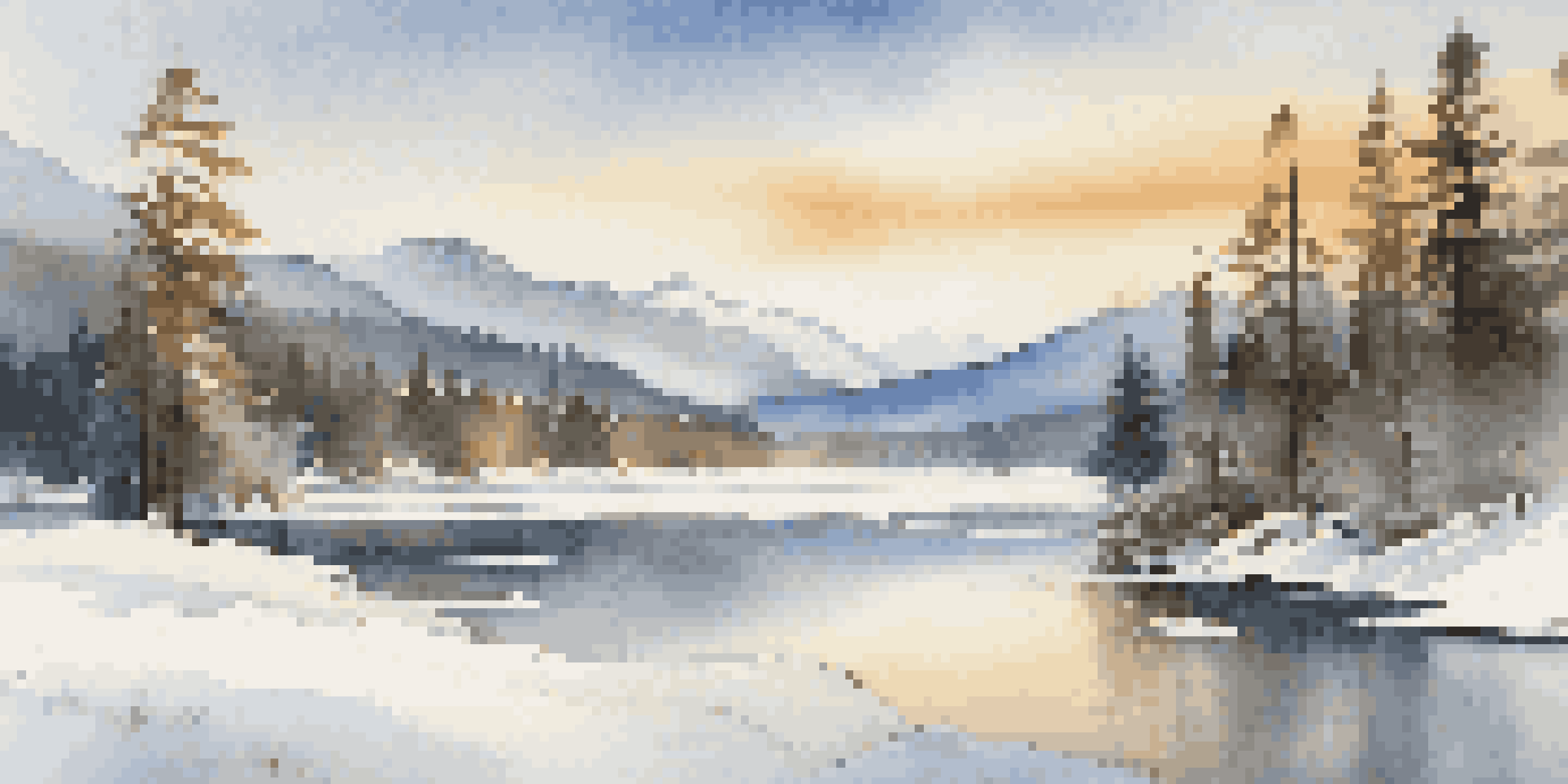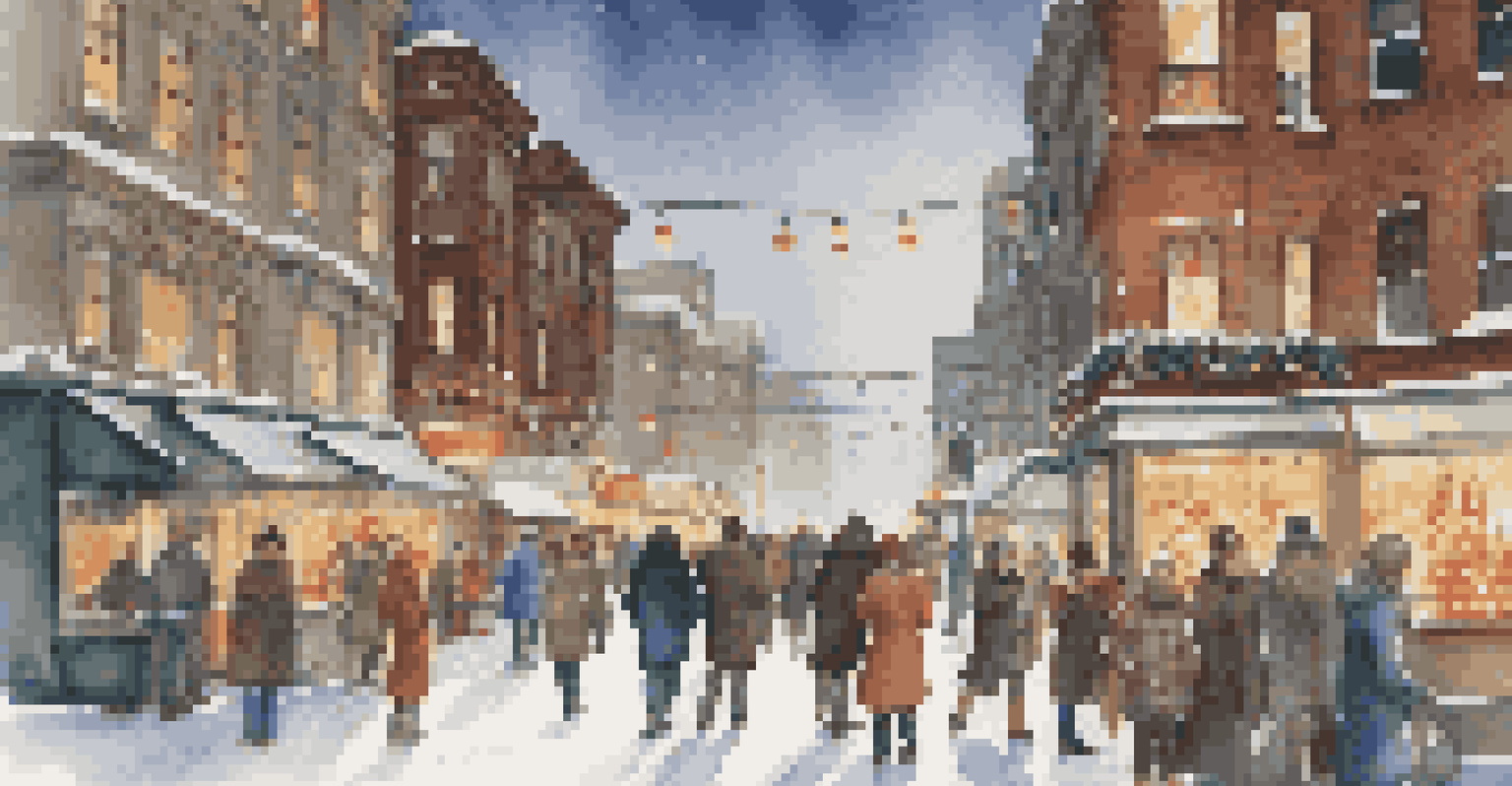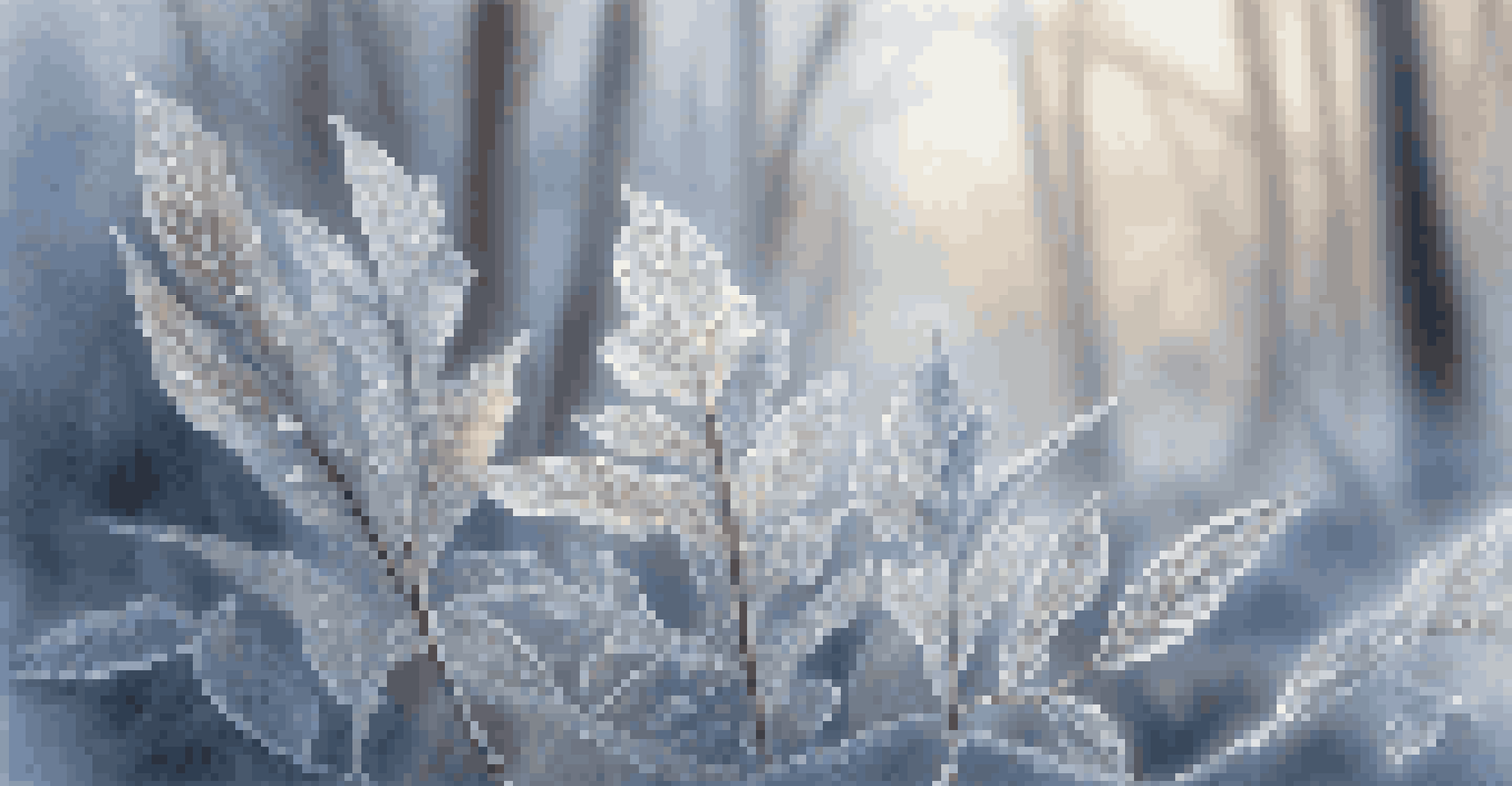Winter Photography Locations: Capture Stunning Landscapes

National Parks: Nature's Winter Wonderland Awaits
National parks are a treasure trove for winter photography enthusiasts. Imagine capturing the serene beauty of snow-dusted trees and frozen lakes, all framed by majestic mountains. Parks like Yellowstone and Yosemite transform into a winter wonderland, providing stunning backdrops for your lens.
In every walk with nature one receives far more than he seeks.
In these parks, the crisp air and quiet surroundings offer a unique opportunity to connect with nature. The contrast of the white snow against the deep greens and browns of the trees creates visually striking images. Plus, the wildlife takes on a different character in winter, making it an exciting time for capturing animal behavior.
Don't forget to explore different times of day for the best lighting. Early mornings and late afternoons, known as the golden hours, can add a magical glow to your winter landscapes. Bring a thermos of hot cocoa to keep warm while you wait for that perfect shot!
Coastal Areas: Unique Winter Photography Opportunities
While most think of winter as a snowy season, coastal areas offer a different kind of beauty. Locations like the Outer Banks or Maine's rugged coastline showcase dramatic ocean waves crashing against icy shores. The contrast of the vibrant blues of the water against the white of the snow can create striking photographs.

Winter at the coast also means fewer crowds, providing a more peaceful shooting experience. You might catch stunning sunrises or sunsets reflecting off the water, creating vibrant colors that pop in your images. The soft, muted light of winter can add a serene quality to your coastal landscapes.
Winter Parks: A Photographer's Dream
National parks in winter offer breathtaking landscapes and unique wildlife opportunities for stunning photography.
Plus, you might even spot winter wildlife, such as migratory birds or seals, which can add life to your coastal compositions. Remember to dress warmly and keep an eye on the tides to ensure you can safely capture the best moments.
Mountain Ranges: Capture Majestic Snow-Capped Peaks
Mountains in winter are iconic, offering breathtaking views and breathtaking photo opportunities. Locations like the Rockies or the Alps present stunning vistas with towering peaks draped in snow. The vastness of these landscapes can evoke a sense of adventure and tranquility in your photography.
Photography is the story I fail to put into words.
When photographing mountains, consider different angles and perspectives. A low-angle shot can emphasize the grandeur of the peaks, while wide shots capture the sweeping landscapes. Early morning light can illuminate the snowy slopes, enhancing the textures and shadows for dramatic effects.
Additionally, look for unique features such as frozen waterfalls or ice formations that can add interest to your images. Winter sports enthusiasts will also find opportunities to capture action shots, adding a dynamic element to your portfolio.
Forests: Enchanted Winter Scenes Await You
Winter forests can feel like stepping into a fairy tale, with snow-laden branches creating a magical atmosphere. Locations like the Black Forest in Germany or the Boreal forests in Canada offer stunning landscapes filled with towering trees and gentle snowflakes. The quiet stillness of the forest in winter can bring a sense of peace to your photography.
When photographing forests, look for leading lines created by pathways or streams to guide the viewer's eye. The interplay of light and shadow can create depth in your images, especially when the sun filters through the trees. Macro photography enthusiasts can also explore details like frost on leaves or icicles hanging from branches.
Coastal Beauty: Winter's Unique Charm
Coastal areas provide striking contrasts and fewer crowds, making winter an excellent time for capturing serene ocean scenes.
Don’t forget to experiment with your composition. A well-placed subject, like a lone tree or a winding path, can create a focal point that adds interest to your winter forest scenes. The tranquility of the forest can give you a chance to connect deeply with your surroundings.
Urban Settings: Finding Winter Beauty in the City
Cities can transform into magical winter landscapes, with twinkling lights and snow-covered streets. Iconic urban locations like New York City and Chicago offer unique photo opportunities amidst bustling holiday decorations. The contrast of city architecture against a winter backdrop can result in striking images that capture the spirit of the season.
Exploring urban areas allows you to incorporate human elements into your photography, such as people enjoying winter activities or holiday markets. The hustle and bustle of city life combined with winter's charm can tell compelling stories through your lens. Nighttime photography can be particularly rewarding with festive lights illuminating the scene.
When shooting in the city, look for reflections in puddles or glass to add depth to your images. Experimenting with different perspectives, such as shooting from above or down low, can also yield creative results. Layering elements can help create a sense of depth and dimension in your city winter scenes.
Lakes and Rivers: Capturing Tranquil Winter Reflections
Frozen lakes and rivers offer a unique opportunity for stunning photography in winter. Locations like Lake Baikal in Siberia or the frozen canals of Amsterdam provide incredible backdrops for capturing the stillness of nature. The glassy surfaces of ice can create mesmerizing reflections, enhancing your winter photographs.
When photographing these bodies of water, consider the time of day for optimal lighting. Early mornings often bring mist rising from the water, creating an ethereal quality that can add depth to your images. Additionally, capturing the contrast between the ice and surrounding landscapes can create striking compositions.
Urban Landscapes: City Winter Wonders
Cities transform into enchanting winter settings, offering captivating urban photography opportunities amidst festive decorations.
Don't shy away from using different techniques, such as long exposures, to create a smooth, dreamy effect on the water. Also, keep an eye out for interesting textures in the ice or unique formations that can add character to your shots. The tranquility of these settings can be truly inspiring.
Historical Sites: Adding Depth to Your Winter Photography
Historical sites take on a different charm in winter, with snow adding a layer of beauty to their stories. Locations like the ancient ruins of Pompeii or castles in Scotland offer rich history combined with stunning winter landscapes. The contrast of history and nature can create compelling narratives in your photography.
When photographing these sites, consider how the winter setting enhances their character. Snow-covered rooftops and frosted stone walls can evoke a sense of nostalgia and wonder. Capturing the play of light on these structures can bring out their details and textures, making them even more captivating.

Additionally, try to incorporate people experiencing these historical sites in winter. This can add a human element to your compositions, giving context and scale to the grandeur of the structures. Don’t forget to explore different angles for unique perspectives that tell the story of the site in a winter setting.
Tips for Capturing Stunning Winter Landscapes
Capturing stunning winter landscapes requires some specific techniques and gear. Start with a sturdy tripod to help stabilize your shots, especially in low light conditions. A polarizing filter can also reduce glare from the snow and enhance the colors in your images, making your landscapes pop.
Pay attention to exposure settings, as snow can confuse your camera's metering system. You may need to overexpose slightly to ensure the snow appears white instead of gray. Additionally, increasing your ISO can help in capturing details in the shadows without losing the bright highlights.
Lastly, dress warmly and be prepared for changing weather conditions. Keeping your camera warm will prevent condensation when transitioning between the cold outdoors and warmer indoor environments. These tips can help you make the most of your winter photography adventures, resulting in stunning images you’ll cherish.